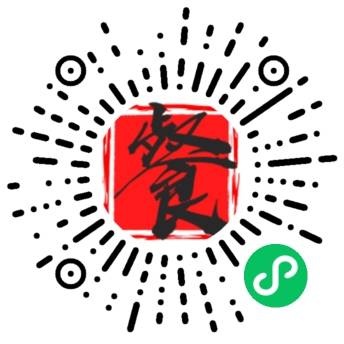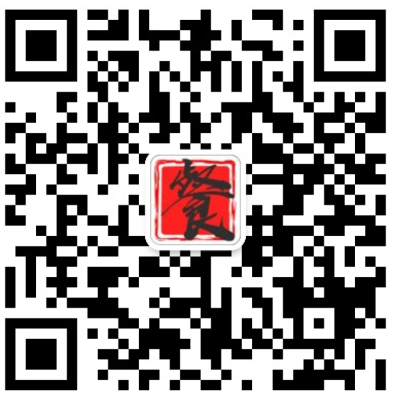▲Click “FBIF食品饮料创新” inblueto follow
Reply number “3″to join in F&B WeChat Group
Written by: Vera LIN
Edited by: Wilbur ZHU (WeChat ID: aotokuer),Anna HU, Olivia HUANG
Soon after being taken over by Nestle in 2012, Wyeth Nutrition improved its sales channels and milk powder quality to target the high-end baby formula market. From 2012 to 2015, Wyeth’s Illuma saw a 3.7% growth in Chinese milk powder market while S-26 Gold and Progress Ultima sales remained strong, occupying a leading position in the market.
On April 20th,David Zhang, the General Manager ofWyeth NutritionGreater China Marketing and Ecommerce, addressed on the topic of “Digital Marketing of Maternal and Baby Brands” on Food and Beverage Innovation Forum 2017 (FBIF 2017).
The“Three Splits“Under the Traditional Business Models
Over the past few years, Wyeth has made some progress but it also recognized the formidable challenges facing it due to drastic changes in consumers and markets.
To begin with, there are a variety of online and offline sales channels nowadays, including maternal and baby stores, baby stores, e-commerce, WeChat and expatriate retailing.
Besides, due to information explosion, consumers tend tohave rather fragmented attention to new ideas.
Furthermore, products have to be increasingly personalized to catch up with the trend of customization in all industries. According to Mr. Zhang, Wyeth’s internal reports revealed that before making their final choices, milk powder buyers may get access to at least 8 to 10 mediums, such as TV shopping programs, e-commerce services. The premise is that milk formula is a critical type of products closely related to people’s health. Consumers will do a lot of research before buying Wyeth, because it is never an impulsive purchase for them.
In the current market situation, brand marketing is highly challenged. In Mr. Zhang’s address, the challenges confronting business models are“splits“, which can be found in the following 3 main aspects:
First is the split among different media. Even though enterprises and media are in the same so-called”ecosystem”, like Alibaba with YOUKU, or iQIYI with Baidu, they may also have the problem of separation and disconnection.
Second is the split among various channels. Online or offline, most channels are in a state of competition rather than collaboration. The number one brand will face even greater challenges in that it will be the first to face up to conflicts in this field, be it price conflicts or others.
Third is the split between media and channel. Enterprises tend to shift more resources like customer volume to e-commerce platforms, but overall, the conversion rate is fairly low. Besides, it doesn’t help retain customers much, which is a costly headache for enterprises. Based on this, Mr. Zhang proposed that on one hand, enterprises should have a better knowledge of these channels and media; on the other hand, they ought to recognize market opportunities, find new business models, and boost cooperation between channels and media, so as to transform customer interest into company interests. Actually, the line between channel and media is quite blurry. Take Alibaba for example, it is both a sales platform and a marketing platform. What’s more, the trend of integrating channel and media is gradually taking shape.
Improvement of All-round Service
“To put our ecosystem plainly, first of all, we provide all-round service for 1000 days, from pregnancy to 2 years after birth. These 1000 days are critical to our type of product because all marketing happens within this period.”In contrast to most fast-moving consumer goods, Wyeth, as a maternal and baby product, values attracting new customers above everything else. Since loyalty is out of question, it is never a top-of-mind issue. Therefore, maternal and baby enterprises like Wyeth spend 99% of their efforts on grabbing customers as early as possible. This is how the industry works. It has a rather short consumer life cycle for the reason that those who are not pregnant or whose kids grow up, have no need for such products. So, customer retention mainly lasts 1000 days.
Targeting the”1000-day”ecosystem constituted by mothers, basically Wyeth has 2 existing platforms: one being its WeChat official account created 2 years ago, the other one being WeChat groups consisting of 200 to 300 mothers. Group members are joined together according to their residential locations, like cities or any specific areas, but most importantly, they have needs in common. In a WeChat group, many medical staff, health specialists and consumers interact with each other to share their knowledge and do some word-of-mouth marketing as well. Wyeth gathers mothers who are in need of nutrition and parenting knowledge in social groups. Up till now, there’re over 2 million mothers active in Wyeth’s WeChat groups, and more than 5 million following Wyeth’s WeChat official account. If a platform can reach a population of several million, it can carry high business value.
Building a Company-owned Ecosystem
In his speech, Mr. Zhang highlighted the“company-owned ecosystem“Wyeth built.“The topic for today is about new ways of UniMarketing. Personally, I regard UniMarketing as a way of finding out all the consumer’s behaviors on any medium he had access to, and target him effectively with the help of his Uni ID. So what we did, specifically, is trying to build a company-owned ecosystem.” Yet Wyeth is not alone in building it, it collaborates with other platforms to output information, which in other words, is to make distributions via professional platforms, thus expanding its ecosystem. Wyeth is now attempting to upload its information to platforms like Tencent and Alibaba, enhance cooperation with them, and match each other’s data, so as to make precision marketing possible. Of course, this process demands efforts from both sides.
Last of all, Mr. Zhang concluded four key points of building a successful company-owned ecosystem:
1. Not all types of products fit in this ecosystem. Only those with brand depth and high customer stickiness do.
2. A professional and effective team is needed to create contents, preventing the platform from being an empty shell.
3. It is essential to collaborate with other platforms.
4. Make sure that there is a team in your constituent framework where you can deploy all the resources in no time. Because all elements involved in the structure, like marketing, sales, data analysis and even logistics, require a coordinator to quickly make the final say.
Food & Beverage Innovation Forum 2017(FBIF2017) was held in Shanghai from April 19th to 21st, 2017. The theme of FBIF2017 is“Global Innovation, Powering Future!”.Topics include Trends, R&D, Marketing and Packaging. 1500+ attended. Speakers include:Zhang Jianqiu, Executive President, Yili Group;Stephen Maher, President, Mondelez China;Zhou Li, Secretary of the Board, Ph.D, Nongfu Spring;Yan Weibin, Chairman, Ausnutria;Craig Slavtcheff, Global VP, R&D, Campbell Soup;Zhang Liaoyuan, Founder, Three Squirrels;Jet Jing, VP, Alibaba Group;Martin Suter, Head of eCommerce, China at AB InBev.For more please reply “FBIF” . / Tips / Click the Menu “FBIF” to view “Agenda“, “Speakers“, “Partners” and other On Site Activities Reply “attendee“, “photo“, “news” to get related information. For other key words, pls reply “keywords“ / Read More/ Brand Socialization Opportunities in the Digital Marketing Era Exclusive | Tencent Reshapes FMCG Marketing with 3 Moves Coca-Cola’s Marketing Legend Creator Shared Secret of Marketing Share a Coke: How the Groundbreaking Campaign Got Its Start /WeChat Groups / Long Press this QR Code to follow“FBIF“. Reply number “3” to join inCEO,R&D,Marketing,Packaging,Functional Foods,Dairy,Beverage,Snacks, etc. WeChat groups(Group members include seniors from Nestle, Coca-Cola, PepsiCo, AB-InBev, Yili, Mengniu, Master Kong and Nongfu Spring etc.) ▲follow us and”Sticky On Top”
原创文章,作者:网络转载,如若转载,请注明出处:https://www.qiyu88.com/188508.html















